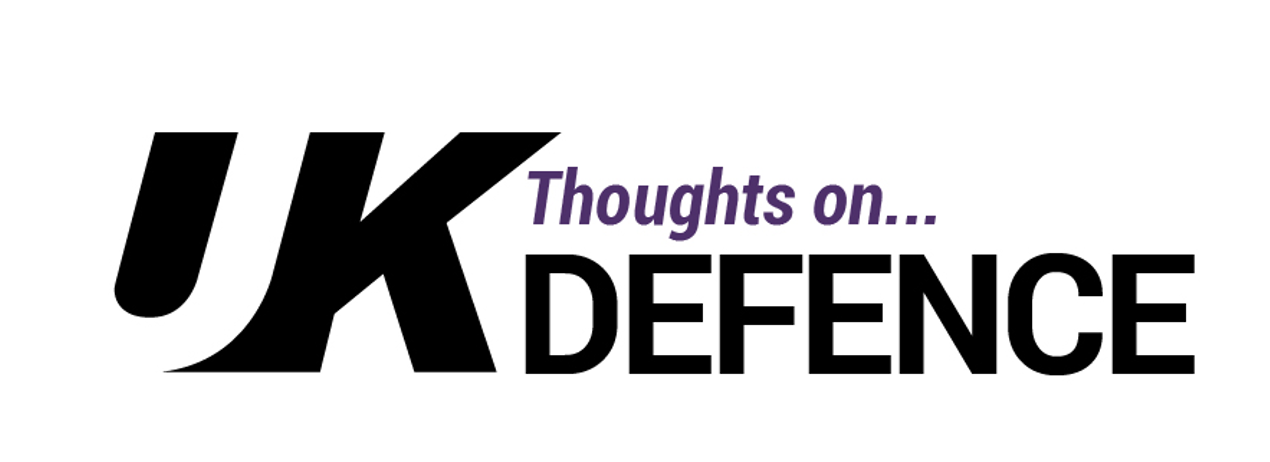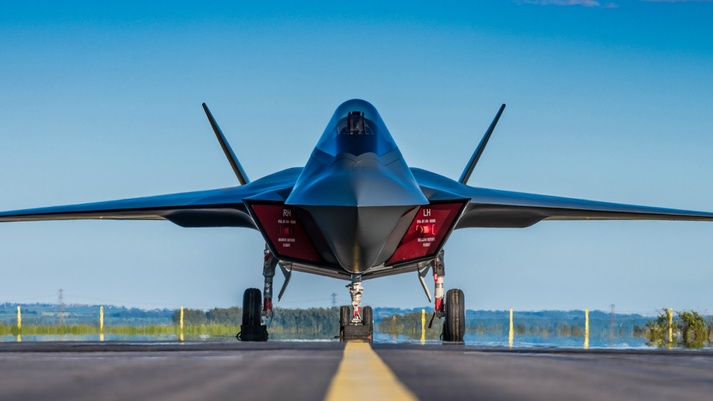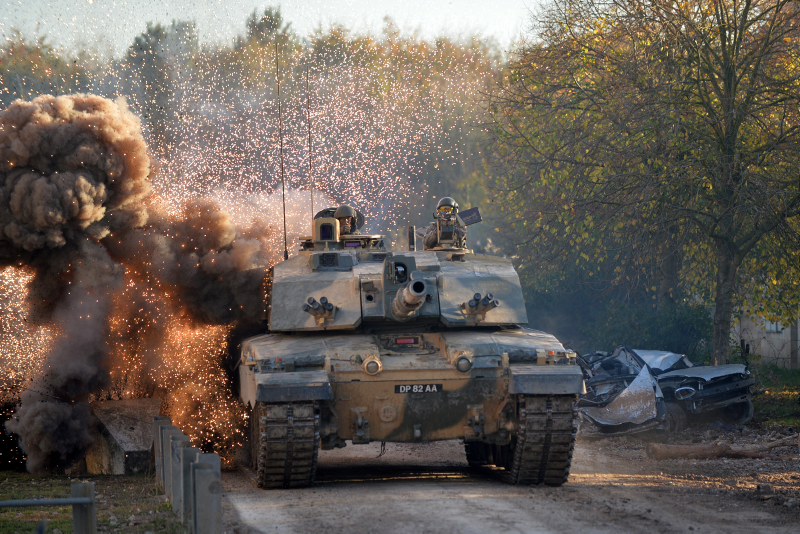On Saturday 16 November 2019, the Royal Navy’s second Queen Elizabeth-class aircraft carrier HMS PRINCE OF WALES (HMSPWLS) sailed into Portsmouth harbour for the first time. She will be formally commissioned on Tuesday 10 December 2019, on the seventy-eighth anniversary of the sinking of her predecessor during World War II. The decision to procure HMSPWLS and her sister ship HMS QUEEN ELIZABETH (HMSQNLZ) was taken as part of the Labour government’s 1998 strategic defence review – these ships have been a long time in the making.
That said, not everyone is enthusiastic now they have finally arrived. As The Daily Telegraph reported in May this year, former Chief of the Defence Staff Lord Houghton of Richmond believes their purchase was a ‘bad idea’ and the Ministry of Defence would ‘rue the day’ they were bought. So, are the Royal Navy’s new aircraft carriers vital additions to the fleet or simply two white elephants?
1998 Strategic Defence Review – The need for Aircraft Carriers
In 1998, the then secretary of state for defence, George Robertson, believed that the UK’s armed forces must be prepared to ‘go to the crisis rather than have the crisis come to us’. It was this approach that led to the purchase of HMSQNLZ and HMSPWLS to ‘project power more flexibly around the world’. Whilst both the government’s and the nation’s appetite for enduring expeditionary military may have diminished somewhat since operations in Iraq and Afghanistan, the last two studies into UK defence and security – the National Security Capability Review and the Modernising Defence Programme – each concluded that the major challenges to the UK’s security had become more complex, intertwined and dangerous over the last few years.
To that end, notwithstanding the extremely long procurement lead times and considerable cost (estimated to be in excess of £6 billion), it could be argued that the decision to persevere with the development and construction of the two carriers, during a period of acute pressure on the defence budget, showed both foresight and prudence.
Vulnerability of Aircraft Carriers Today
Recently, however, questions have been asked about the vulnerability of aircraft carriers, particularly as a result of an increasing focus of both Russia and China on anti-access and area denial weapons systems. For example, China’s DF-21D anti-ship ballistic missile has a range of over 1,500 km and it has been estimated that over 300 could be manufactured for the cost of just one of the UK’s aircraft carriers. Furthermore, in a recent article in The Economist, the Commandant of the US Marine Corps, General David Berger was quoted as acknowledging that traditional large-signature naval platforms were increasingly at risk from long-range precision weapons.
Of course, aircraft carriers do not operate alone. The escort ships and submarines that form a carrier strike group exist to deal with aerial, surface and sub-surface threats, and a carrier’s own air wing can also provide protection from hostile aircraft. In addition to its aircraft carrier, a typical US Navy carrier strike group consists of a guided-missile cruiser, a squadron of up to four destroyers and frigates, plus an undisclosed number of SSN and SSBN submarines. All backed up by support ships and tankers. Does the Royal Navy have the capacity to generate a similar capability?
Carrier Strike Groups
The Royal Navy has nineteen destroyers and frigates, together with six attack submarines (increasing to seven once the final Astute class boat is commissioned – expected in 2024). Earlier this year, Commodore Mike Utley, Commander UK Carrier Strike group, confirmed that for her the first operational deployment in 2021, HMSQNLZ will be escorted by two Type 45 destroyers, two Type 23 frigates, an SSN submarine, a Tide-class tanker and RFA Fort Victoria. Its air wing is to comprise F35B Lightning II aircraft from 617 Squadron Royal Air Force and the Unites States Marine Corps. Whilst this commitment will strain the fleet, it should be manageable.
However, doubling the requirement by deploying both HMSQNLZ and HMSPWLS simultaneously would be significantly more demanding, especially considering that only eighteen months ago maintenance and crew pressures reduced the total number of serviceable destroyers and frigates to just five. Using the ‘rule of thirds’ (i.e. for every ship at sea, one is preparing for operations and another is in maintenance), the current destroyer/frigate inventory is clearly inadequate. Even with the assistance of NATO allies, it is difficult to see how maintaining two carrier strike groups would not result in the abandoning of national or alliance maritime commitments elsewhere.
Aircraft for the Carriers
The UK currently operates a fleet of eighteen F-35B Lightning II aircraft, with a further seventeen to be delivered between 2020 and 2022. There are no details on when the remaining thirteen aircraft, to complete the first tranche of forty-eight, will be ordered. The Royal Navy is working towards achieving its Full Operating Capability, with two squadrons (a total of twenty-four aircraft) deployed on a single carrier by 2023. Generating twenty-four aircraft from a fleet of thirty-five is eminently achievable, but it won’t leave much capability left over to do anything else, and certainly not enough to generate any meaningful fixed-wing presence for the second carrier.
That said, this doesn’t necessarily make the aircraft carriers white elephants. There are myriad roles the second carrier could undertake without F35Bs embarked. For example, it could operate in the helicopter landing platform role, supporting special forces, non-combatant evacuation operations, or humanitarian missions. Moreover, in all of these roles, although it would still need protecting, it is unlikely that would require the same number of assets as a full carrier strike group.
Conclusion
The UK government has sunk a considerable proportion of the defence budget into its new aircraft carriers, and it will undoubtedly want a return on its investment. As @onUKDefence has pointed out, notwithstanding recent questions about their vulnerability, aircraft carriers remain a symbol of national power, and both HMSQNLZ and HMSPWLS can expect to be busy as soon as they are declared operational; they certainly will not be white elephants. That said, from 2023, and in the near-term thereafter, the UK will only have the sovereign capacity to deploy a single carrier strike group. However, once the first tranche of F35Bs has been fully delivered, the pressure to generate a second will surely increase.
Knowing this, the Ministry of Defence should, right now, be investigating how best to create the headroom to fund the extra maritime assets needed to generate another carrier strike group, recognising that trade-offs against other capability requirements will be inevitable. Under the current defence and security review process, big strategic decisions are made every five years, with the next review due in 2020. For the aircraft carriers not to become white elephants, they must be fully exploited. For that to happen, top of the new capability list must be more destroyers and frigates. But this should come as no surprise; after all, we are an island nation.






